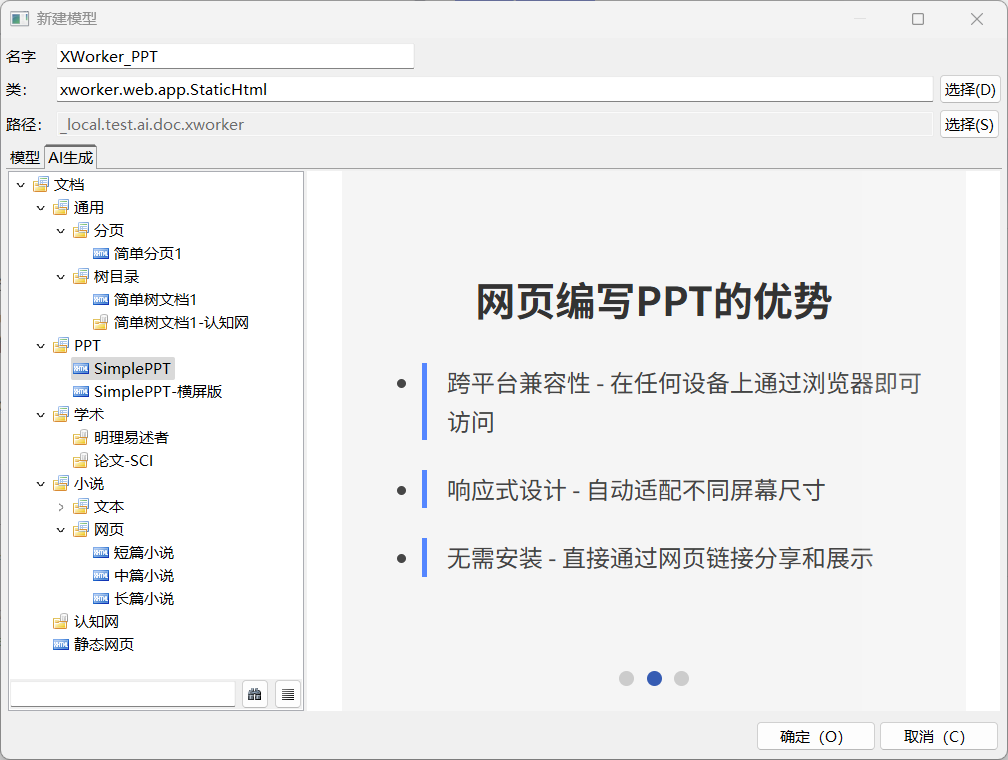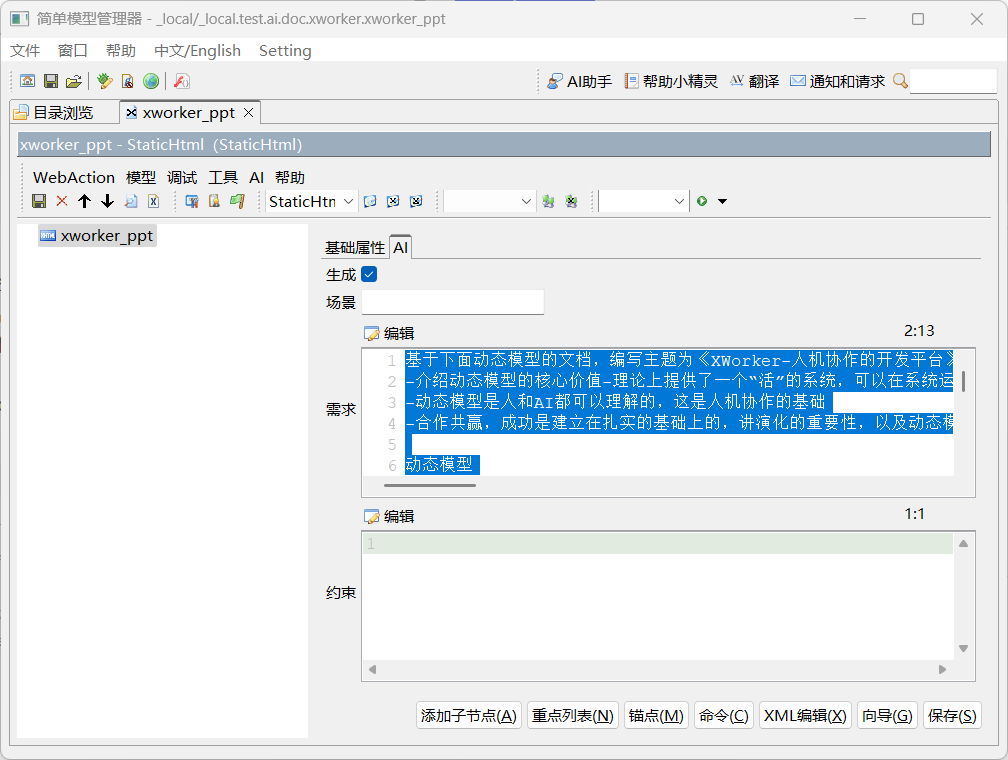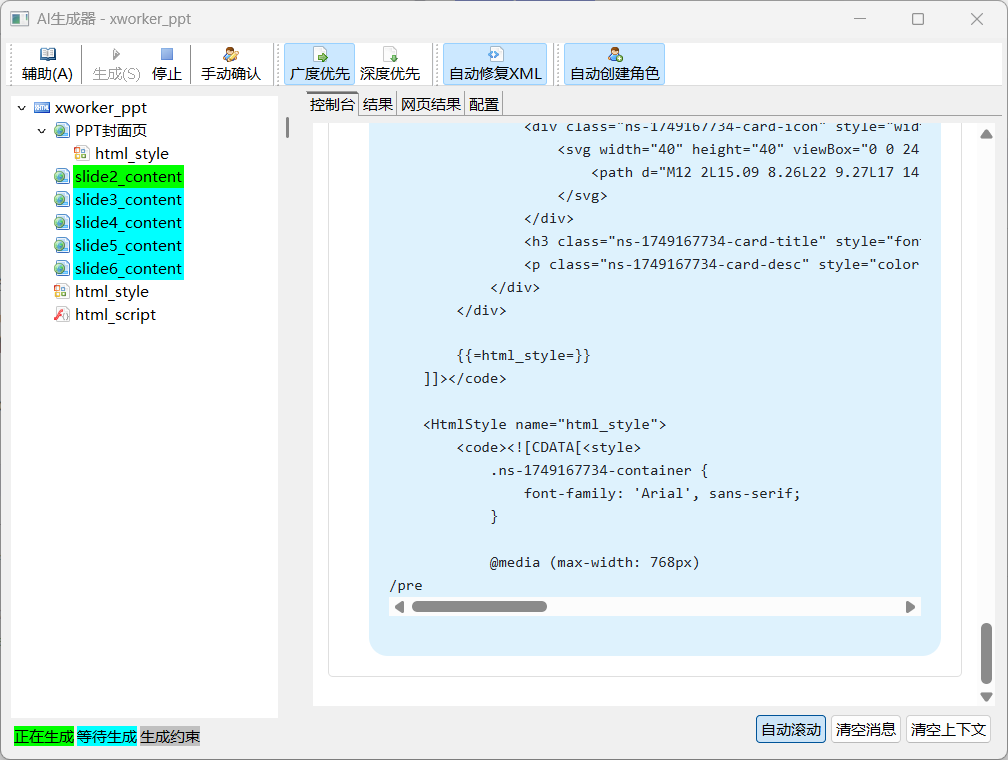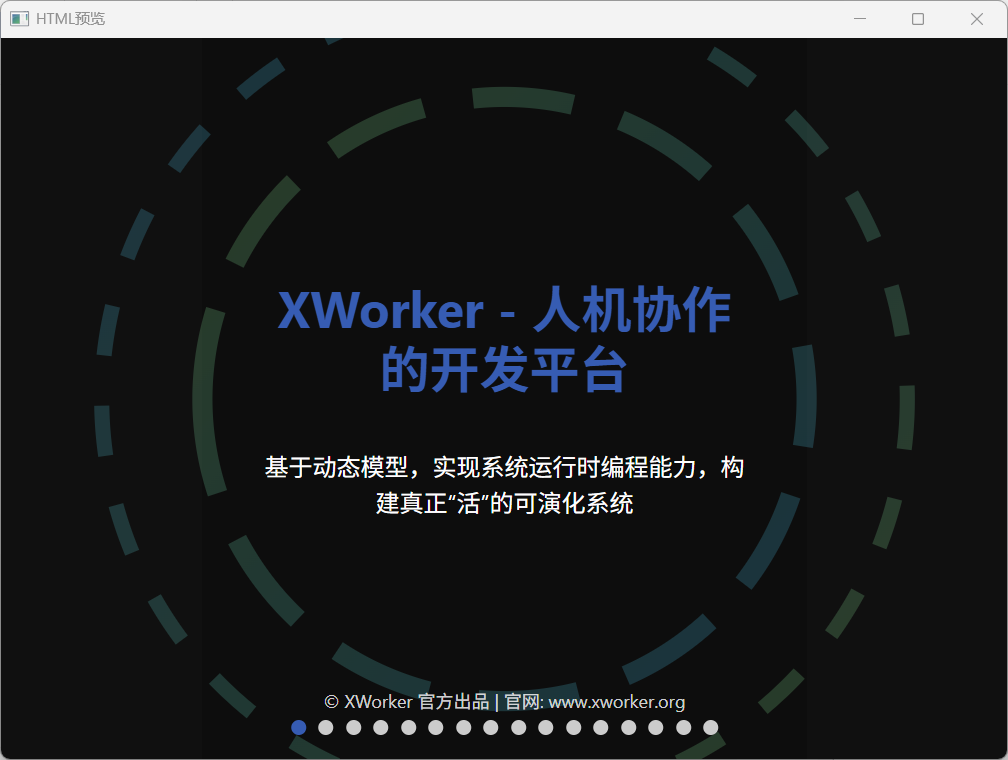Human-machine collaboration platform
XWorker is becoming a human-machine collaboration platform.
- Everything can be generated by AI
In dynamic models, the model is structured data. Due to the existence of meta-models, any model can be generated by AI in theory.
- “live” system
Dynamic models can realize runtime programming, and the functions of the system can be changed dynamically. Such “live” systems are very suitable for AI.
- Shared knowledge space
Dynamic models are understandable to both humans and AI, and can be used as a shared knowledge space between humans and humans, humans and AI, and AI and AI.
Generate example
- Human-AI Collaboration
- 人机协作的平台
- Gemini-动态模型与虚拟世界
- Kimi-动态模型与虚拟世界
- AI生成模型的方法
- AI Examples
- 文本生成
Copyright © 2007-2019 XWorker.org 版权所有 沪ICP备08000575号




